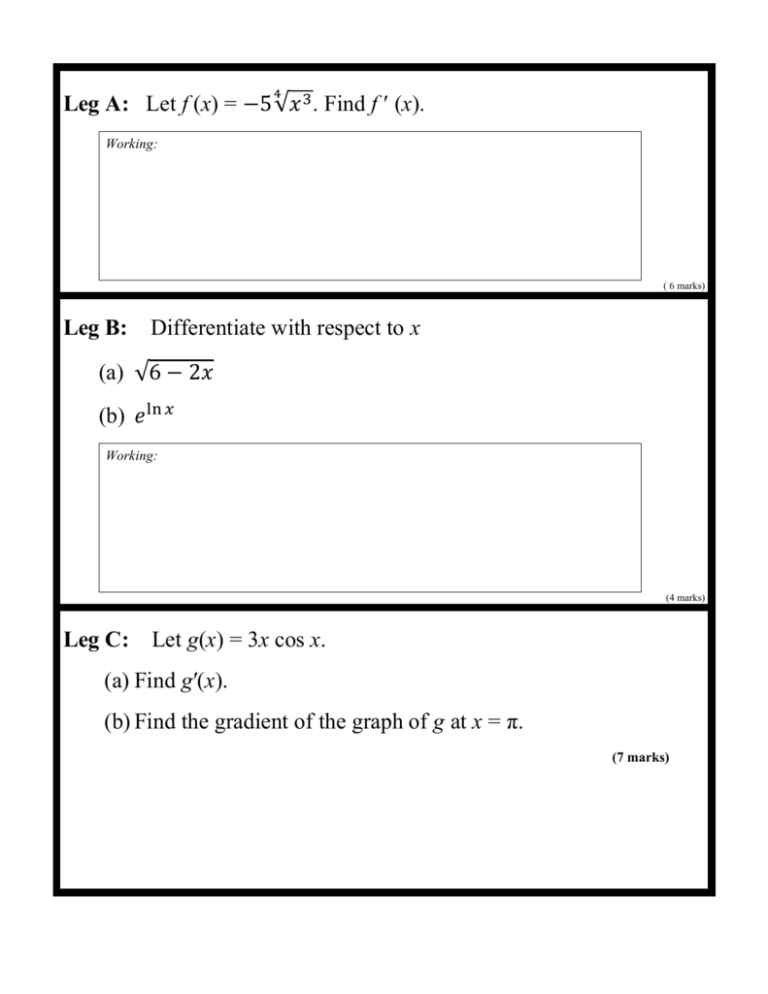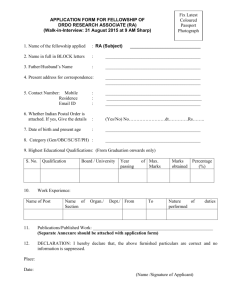for x
advertisement

4 Leg A: Let f (x) = −5√𝑥 3 . Find f (x). Working: ( 6 marks) Leg B: Differentiate with respect to x (a) √6 − 2𝑥 (b) 𝑒 ln 𝑥 Working: (4 marks) Leg C: Let g(x) = 3x cos x. (a) Find g′(x). (b) Find the gradient of the graph of g at x = π. (7 marks) Leg D: Let ℎ(𝑥 ) = ln 𝑥 𝑥3 , for x > 0. (a) Use the quotient rule to find h’(x). (b) The graph of g has a maximum point at A. Find the xcoordinate of A. (7 marks) 4 Leg E: Let f(x) = kx . The point P(1, k) lies on the curve of f. At P, the normal to the curve is parallel to y = 1 x. 8 Find the value of k. (Total 6 marks) Leg F: Let g(x) = 3x4 – 16x3 + 24x2 – 2. (a) Find the two values of x at which the tangent to the graph of g is horizontal. (b) For each of these values, determine whether it is a maximum or a minimum. (14 marks) Leg G: Let f′(x) = –24x3 + 9x2 + 3x + 1. (a) There are two points of inflexion on the graph of f. Write down the x-coordinates of these points. (b) Let g(x) = f″(x). Explain why the graph of g has no points of inflexion. (Total 5 marks) Leg H: Consider the function f (x) = 4x3 + 2x. Find the equation of the normal to the curve of f at the point where x =1. (Total 6 marks) Leg I: The diagram shows part of the graph of y = f′(x). The x-intercepts are at points A and C.There is a minimum at B, and a maximum at D. (a) (i) Write down the value of f′(x) at C. (ii) Hence, show that C corresponds to a minimum on the graph of f, i.e. it has the same x-coordinate. (b) Which of the points A, B, D corresponds to a maximum on the graph of f? (c) Show that B corresponds to a point of inflexion on the graph of f. (7 marks) Leg J: A curve has equation y = x(x – 4)2. (a) For this curve find (i) the x-intercepts; (ii) the coordinates of the maximum point; (iii) the coordinates of the point of inflexion. (9) (b) Use your answers to part (a) to sketch a graph of the curve for 0 x 4, clearly indicating the features you have found in part (a). (3)






